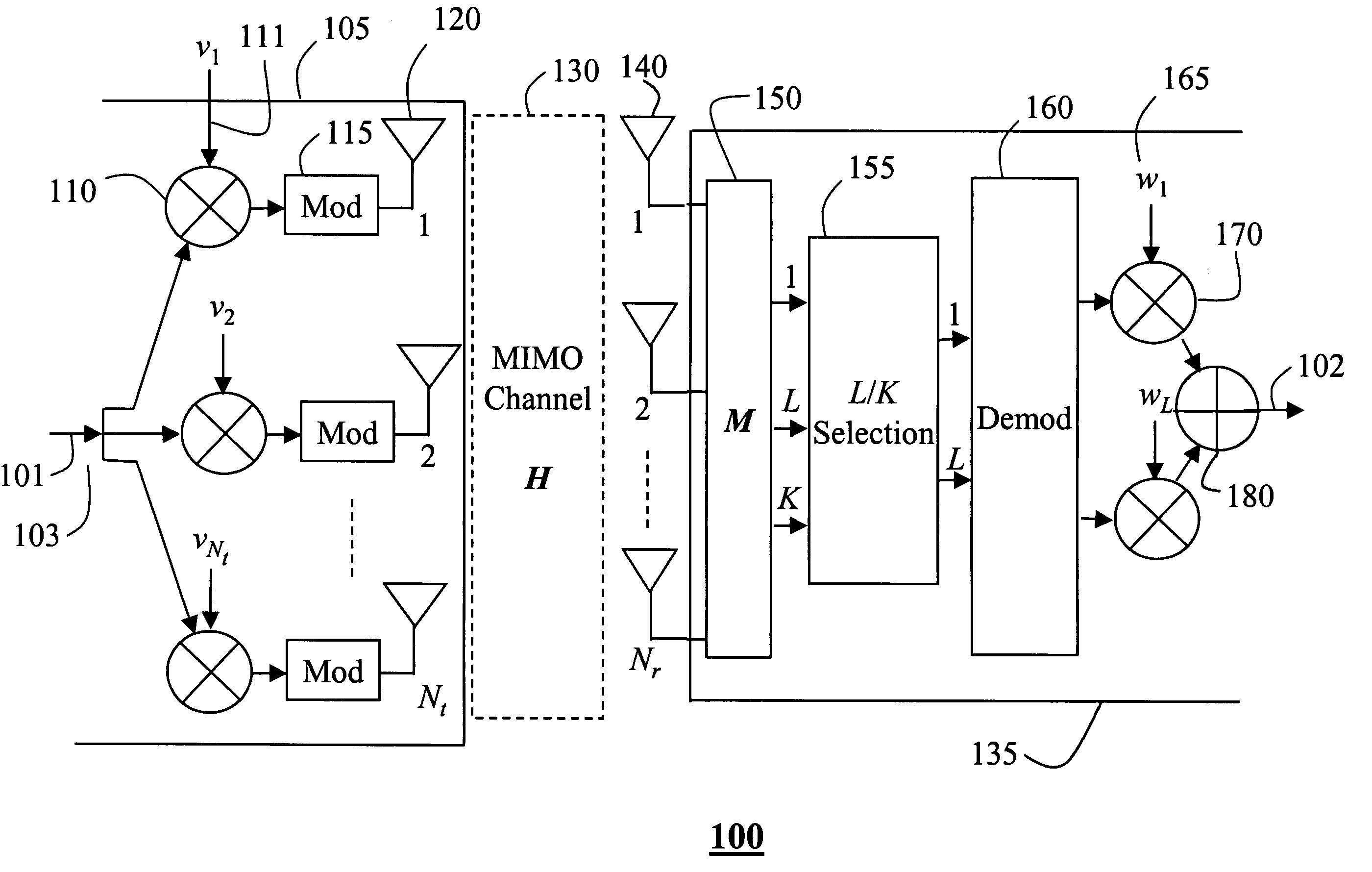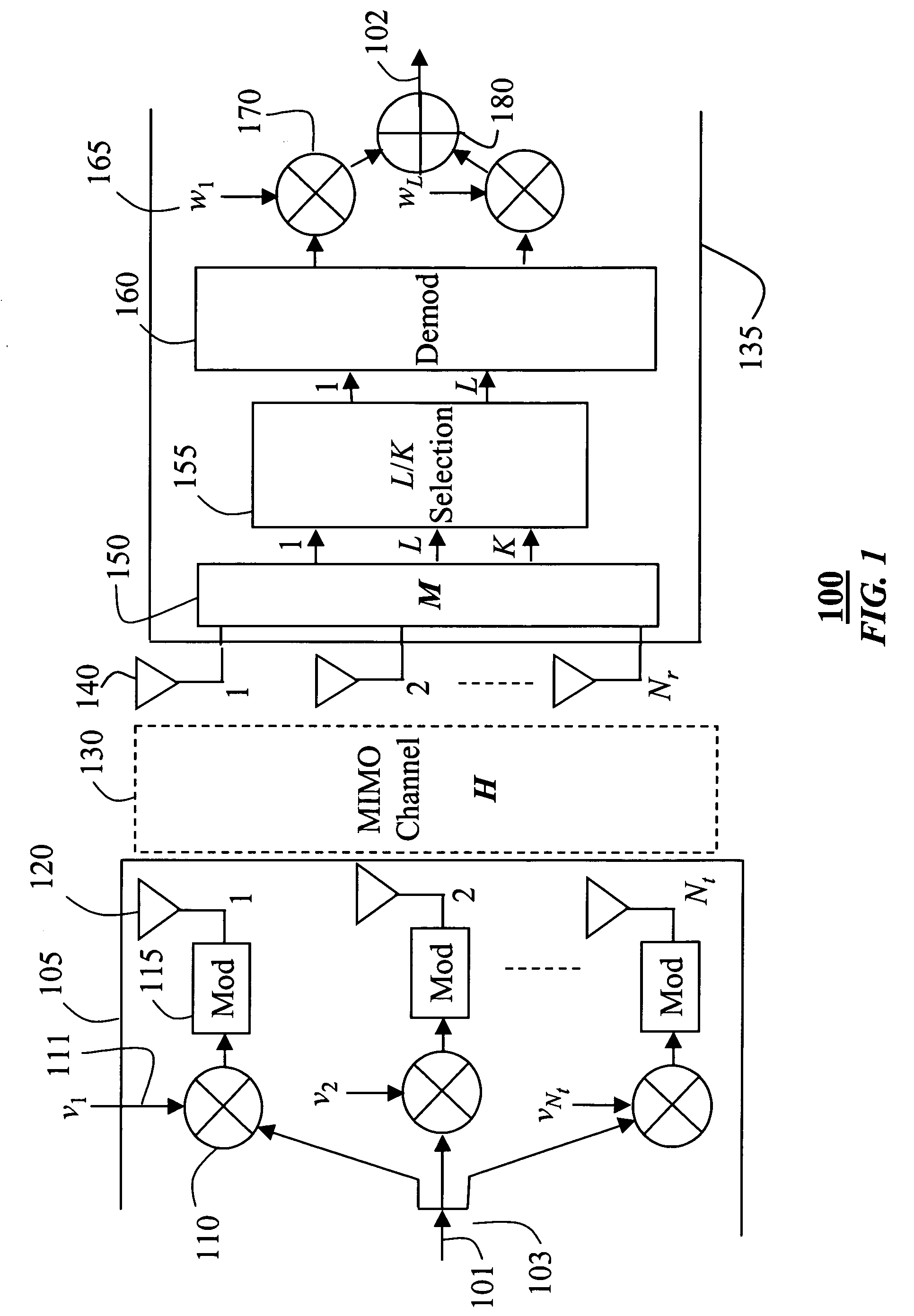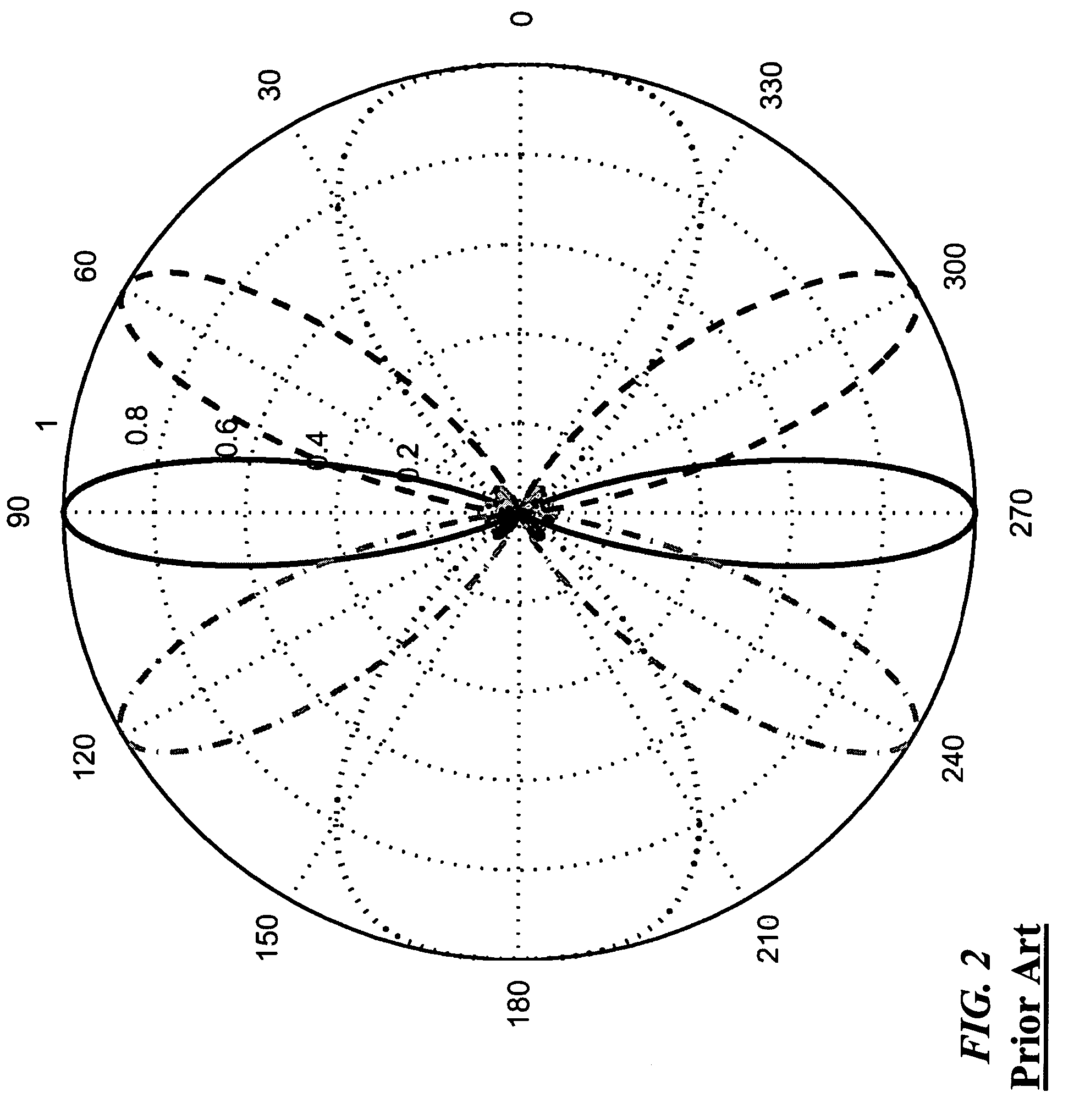RF-based antenna selection in MIMO systems
a technology of antenna selection and mimo technology, applied in the field of selecting antennas, can solve the problems of increasing system and hardware complexity of multi-output (mimo) systems, high cost of chains, and prohibitive signal processing for systems with a large number of antenna elements, so as to increase the bandwidth of a wireless communication channel and reduce the complexity of the system
- Summary
- Abstract
- Description
- Claims
- Application Information
AI Technical Summary
Benefits of technology
Problems solved by technology
Method used
Image
Examples
Embodiment Construction
[0057] System and Channel Model
[0058] Our invention provides a system and method for RF pre-processing and selecting a subset of the processed outputs in a multiple-input, multiple-output (MIMO) wireless communication system subject to spatially correlated MIMO channel conditions. Our invention is applicable to a general multiple antenna system that uses multiple antennas at the transmitter or at the receiver, or both.
[0059] Specifically, the invention generates a matrix M based on long-term characteristics of the wireless channel. The matrix M is multiplied times input RF signals to obtain output RF signals. The matrix can be generated in a transmitter, a receiver, or both.
[0060]FIG. 1 shows a system 100 that can use our invention to maximize diversity gain. In a transmitter 105, partially shown, copies of an input signal stream 101 are multiplied 110 by an Nt-dimensional complex weighting vector v 111 before modulation 115 to passband. Each signal is then applied to a different...
PUM
 Login to View More
Login to View More Abstract
Description
Claims
Application Information
 Login to View More
Login to View More - R&D
- Intellectual Property
- Life Sciences
- Materials
- Tech Scout
- Unparalleled Data Quality
- Higher Quality Content
- 60% Fewer Hallucinations
Browse by: Latest US Patents, China's latest patents, Technical Efficacy Thesaurus, Application Domain, Technology Topic, Popular Technical Reports.
© 2025 PatSnap. All rights reserved.Legal|Privacy policy|Modern Slavery Act Transparency Statement|Sitemap|About US| Contact US: help@patsnap.com



